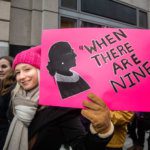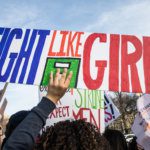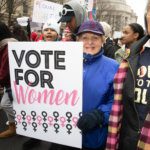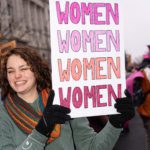‘Hear Me Roar!’: 5th Women’s March Planned for Oct. 17 (photos)
By • October 1, 2020 0 2757
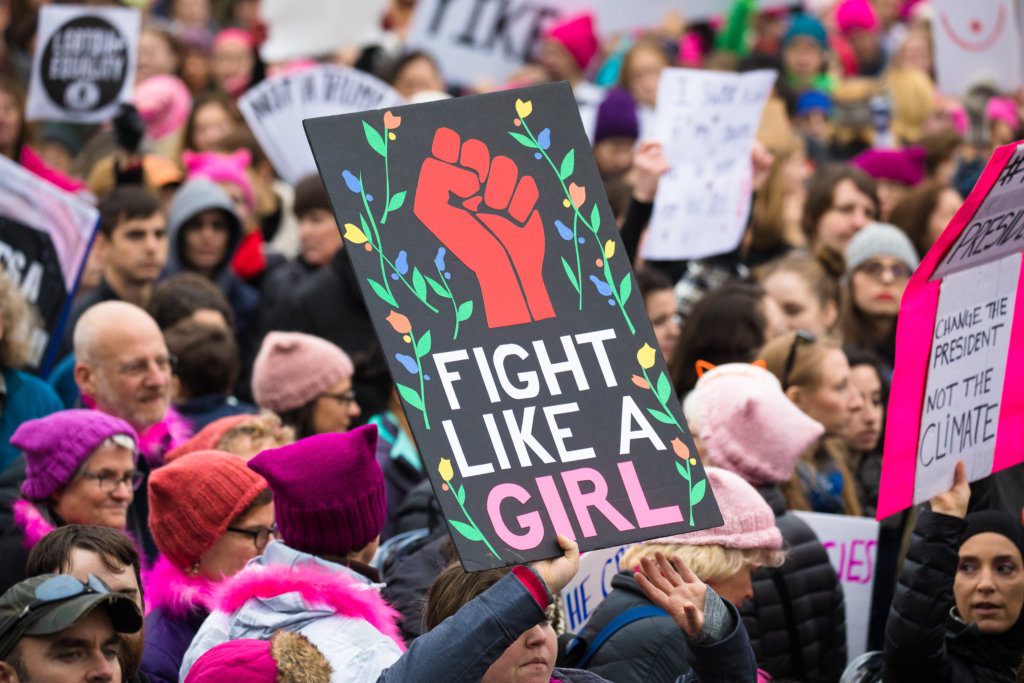
“I am woman, hear me roar. In numbers too big to ignore,” began the song.
Singer Helen Reddy died on Sept. 29 in Los Angeles. Her 1972 hit “I am Woman” resonated with audiences worldwide in the midst of the women’s liberation movement. That same year, 1972, marked the Senate passage of the Equal Rights Amendment; Shirley Chisholm became the first woman ever to run for the Democratic Party’s presidential nomination; and the Supreme Court would decide Roe v. Wade, legalizing a woman’s right to choose to have an abortion, in January of 1973, just a month after “I Am Woman” reached number one on the charts.
Just 17 days before the 2020 presidential election, the Women’s March organization plans a nationwide demonstration targeting President Donald Trump, in particular his move to fill the seat of Associate Justice Ruth Bader Ginsburg, a liberal icon on the Supreme Court, with a hard right-wing conservative. The court change, many feel, threatens to reverse Roe v. Wade, and otherwise stifle women’s progress toward full gender equality.
This will be the fifth annual iteration of the Women’s March. It coincides with the 100th anniversary of women obtaining the right to vote. The first march, which took place the day after President Trump’s inauguration in 2017, was the largest protest in U.S. history, drawing upwards of 500,000 to D.C. and an estimated 4.6 million participants across the country. (Subsequent years have drawn smaller crowds.)
Unlike prior years, this demonstration cannot wait for January to come around. The goal of the Oct. 17 march, according to organizers, will be to “send an unmistakable message about the fierce opposition to Trump and his agenda, including his attempt to fill Ruth Bader Ginsburg’s seat.”
At stake with the Supreme Court pick are reproductive rights, health insurance, sex discrimination, gun control, public education and the environment, to name but a few. ”We will not allow Trump and the GOP to endanger our lives any longer,” states the promotional material.
The women’s suffrage movement in the United States can trace its origins to the Seneca Falls Convention of 1848 in upstate New York, the first to be called for the sole purpose of discussing women’s rights.
Elizabeth Cady Stanton, one of its organizers, began with a speech enunciating the meetings’ goals and its purpose, which resonate today: “We are assembled to protest against a form of government, existing without the consent of the governed — to declare our right to be free as man is free, to be represented in the government which we are taxed to support.”
A century ago, on Aug. 18, 1920, Tennessee ratified the 19th Amendment, which finally guaranteed voting rights to all women in all states and in all elections (though it would take several more decades, culminating in the 1965 Civil Rights Act, before all women, particularly women of color, could exercise their full voting rights.)
The 1920 presidential election was the first to allow women the vote in all 48 states. The League of Women Voters, a nonpartisan group, was established that year. Republican Warren G. Harding, elected to the presidency in 1920, would later be revealed to have been a womanizer, and the leader of the most corrupt administration in the nation’s history (at least up to that time).
In every U.S. presidential election dating back to 1984, women turned out to vote at higher rates than men. (In 2016 exit polls, 53 percent of the electorate was female.) This did not lead to greater representation, however. The Republican conference in the House has 197 members, but only 13 are women. By contrast, of 233 House Democrats, 88 are women.
Women dislike Trump more than their male counterparts, by a lot. A representative Des Moines Register/Mediacom Iowa poll from late September anticipated a tie at 47 percent between the two presidential candidates. Among men in that state poll, the president led by 21 percent over former Vice President Joe Biden. However, Biden had more support from women, leading by 20 percent.
On this 100th anniversary of woman’s suffrage, women could take another bold step on Nov. 3 with the election of Sen. Kamala Harris (D-California) as the first female Vice President of the United States.
“But look how much I gained. If I have to, I can do anything, I am strong, I am invincible, I am Woman.”
View Jeff Malet’s photos from previous Woman’s Marches in Washington D.C. by clicking on the photo icons below.
- 2017 Women’s March in DC (photo by Jeff Malet)
- 2017 Women’s March in DC (photo by Jeff Malet)
- 2017 Women’s March in DC (photo by Jeff Malet)
- 2017 Women’s March in DC (photo by Jeff Malet)
- 2017 Women’s March in DC (photo by Jeff Malet)
- 2017 Women’s March in DC (photo by Jeff Malet)
- The 2017 Women’s March in D.C. Photo by Jeff Malet.
- 2019 Women’s March in DC (photo by Jeff Malet)
- 2017 Women’s March in DC (photo by Jeff Malet)
- 2017 Women’s March in DC (photo by Jeff Malet)
- 2018 Women’s March in DC (photo by Jeff Malet)
- 2018 Women’s March in DC (photo by Jeff Malet)
- 2018 Women’s March in DC (photo by Jeff Malet)
- 2018 Women’s March in DC (photo by Jeff Malet)
- 2018 Women’s March in DC (photo by Jeff Malet)
- 2019 Women’s March in DC (photo by Jeff Malet)
- 2019 Women’s March in DC (photo by Jeff Malet)
- 2019 Women’s March in DC (photo by Jeff Malet)
- 2019 Women’s March in DC (photo by Jeff Malet)
- 2019 Women’s March in DC (photo by Jeff Malet)
- 2019 Women’s March in DC (photo by Jeff Malet)
- 2019 Women’s March in DC (photo by Jeff Malet)
- 2019 Women’s March in DC (photo by Jeff Malet)
- 2019 Women’s March in DC (photo by Jeff Malet)
- 2019 Women’s March in DC (photo by Jeff Malet)
- 2019 Women’s March in DC (photo by Jeff Malet)
- 2020 Women’s March in DC (photo by Jeff Malet)
- 2020 Women’s March in DC (photo by Jeff Malet)
- 2020 Women’s March in DC (photo by Jeff Malet)
- 2020 Women’s March in DC (photo by Jeff Malet)
- 2020 Women’s March in DC (photo by Jeff Malet)
- 2020 Women’s March in DC (photo by Jeff Malet)
- 2020 Women’s March in DC (photo by Jeff Malet)
- 2020 Women’s March in DC (photo by Jeff Malet)








